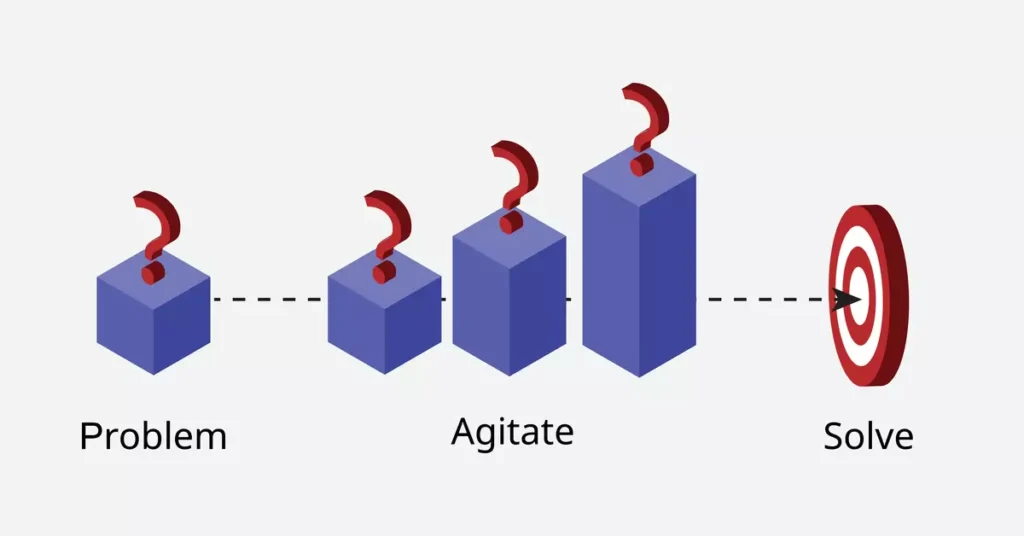Crafting persuasive copy is a cornerstone skill in the arsenal of any marketer or copywriter. In the digital age, where attention spans are fleeting and competition is fierce, mastering techniques that captivate audiences and drive action is essential for success. One such proven framework is the PAS formula – a strategic approach to writing persuasive copy that resonates with readers and compels them to take action. In this comprehensive blog post, we delve into the essence of the PAS formula in Digital Marketing Courses, exploring its components, applications, and profound impact on effective copywriting.
Understanding the PAS Formula:
The PAS formula stands for Problem-Agitate-Solution – a three-step framework designed to address the core needs, desires, and pain points of the target audience in a compelling and persuasive manner.
1. Problem: Identify the Pain Pointhttps://futurevisioncomputers.com/courses-computer-courses-near-me/
The first step in the PAS formula involves identifying and articulating the problem or pain point faced by the target audience. This could be a challenge, frustration, or unmet need that resonates with the reader on a personal level. By pinpointing the problem, copywriters establish relevance and empathy, capturing the reader’s attention and laying the groundwork for further engagement.
2. Agitate: Amplify the Pain
Once the problem is identified, the next step is to agitate and amplify the reader’s pain or discomfort associated with the problem. This involves painting a vivid picture of the consequences, risks, and implications of not addressing the problem. By tapping into the reader’s emotions and highlighting the severity of the issue, copywriters create a sense of urgency and compel the reader to seek resolution.
3. Solution: Present the Solution
Having established the problem and agitated the pain, the final step is to present the solution – the product, service, or offering that addresses the reader’s needs and alleviates their pain points. The solution should be positioned as the answer to the reader’s prayers, offering tangible benefits, features, and outcomes that resonate with their aspirations and goals. By presenting a clear and compelling solution, copywriters motivate the reader to take action and pursue the desired outcome.

Practical Applications of the PAS Formula: Learn Digital Marketing Courses
The PAS formula can be applied across various mediums and formats to create persuasive copy that drives action and yields results:
1. Sales Pages and Landing Pages:
In sales pages and landing pages, the PAS formula serves as a blueprint for crafting compelling headlines, engaging copy, and persuasive calls-to-action (CTAs) that convert visitors into customers. By addressing the reader’s pain points, agitating their concerns, and presenting a compelling solution, copywriters guide visitors through the buyer’s journey and encourage them to take the next step.
2. Email Marketing Campaigns:
In email marketing campaigns, the PAS formula helps create attention-grabbing subject lines and persuasive email copy that prompts recipients to open, read, and act on the message. By addressing a pressing problem, agitating the pain, and presenting a solution that resonates with the reader, copywriters increase open rates, click-through rates, and conversions.
3. Advertisements and Promotions:
In advertisements and promotions, the PAS formula enables copywriters to craft attention-grabbing headlines, compelling copy, and persuasive offers that capture the audience’s interest and drive engagement. By identifying a common problem, agitating the pain associated with it, and offering a solution that delivers tangible benefits, advertisers create a sense of urgency and compel action.
4. Content Marketing and Blog Posts:
In content marketing and blog posts, the PAS formula helps structure engaging narratives, thought-provoking articles, and educational content that resonates with readers and keeps them coming back for more. By addressing real-world problems, agitating the pain points, and providing actionable insights or solutions, copywriters establish credibility, authority, and trust with their audience.

Best Practices for Using the PAS Formula:
To maximize the effectiveness of the PAS formula in creating persuasive copy, consider the following best practices: Learn Digital Marketing Courses
- Know Your Audience: Understand the needs, desires, and pain points of your target audience to create copy that resonates with their motivations and aspirations.
- Focus on Benefits: Emphasize the benefits and outcomes of your solution rather than just its features. Highlight how your offering can alleviate the reader’s pain and improve their quality of life.
- Use Emotionally Charged Language: Tap into the reader’s emotions by using powerful, evocative language that amplifies their pain and stirs their desire for a solution.
- Provide Social Proof: Incorporate testimonials, case studies, and success stories to demonstrate the effectiveness of your solution and build credibility with the audience.
- Include a Clear Call-to-Action (CTA): Guide the reader towards the desired action by including a clear and compelling call-to-action that prompts them to take the next step.
In Conclusion:
The PAS formula is a time-tested framework for creating persuasive copy that resonates with readers and drives action. By identifying the problem, agitating the pain, and presenting a compelling solution, copywriters can captivate audiences, build rapport, and inspire them to take meaningful action. Embrace the power of the PAS formula as a foundational tool in your copywriting arsenal, and watch as your messages resonate with audiences, drive engagement, and achieve remarkable results in the world of marketing and persuasion.


